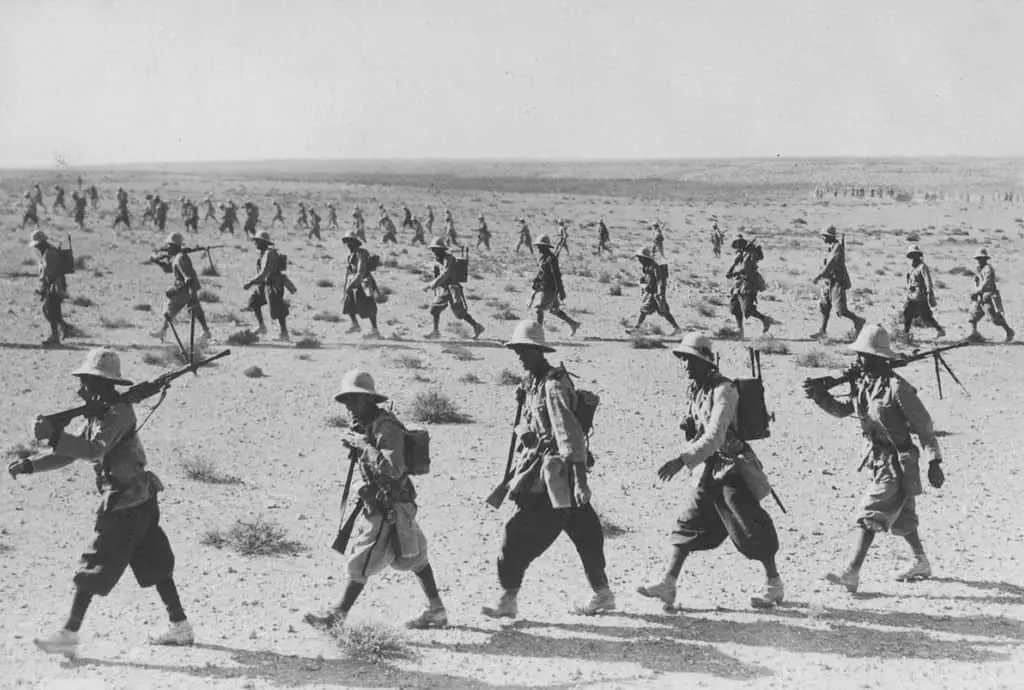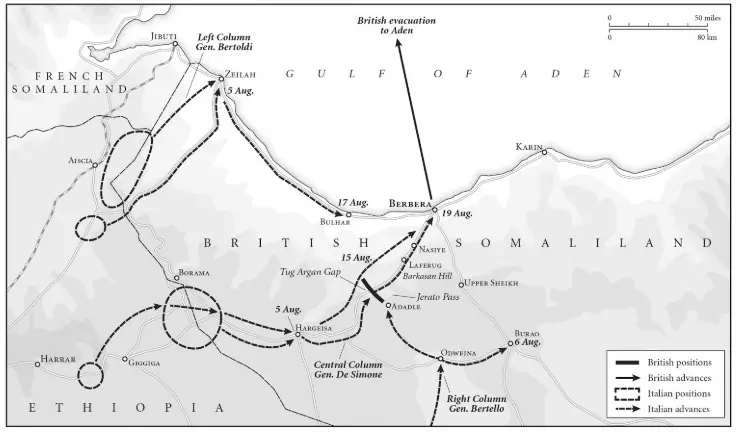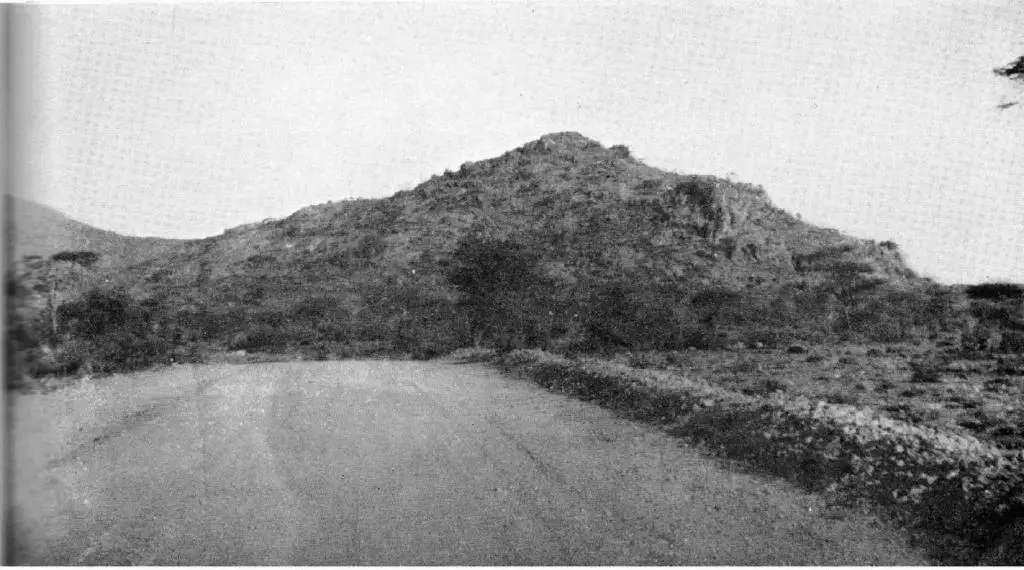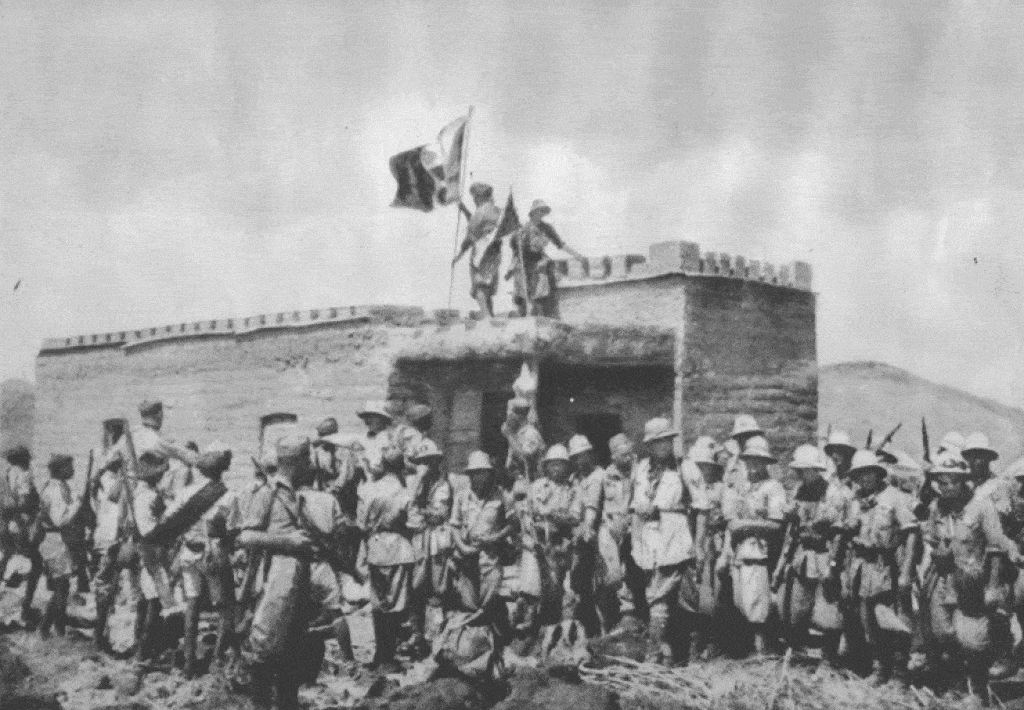A New Front
Benito Mussolini’s declaration of war on Britain and France in June 1940 opened two additional theaters in the war between Allies and Axis powers – North and East Africa. In Africa Orientale Italiana (Italian East Africa), Italian forces in Eritrea, Ethiopia, and Italian Somaliland initiated attacks on British outposts leading up to the invasion of British Somaliland.
On 04 July 1940, Italian troops quickly occupied Kassala and Galabat on the Egyptian-Sudan border. On the same day, Italian troops seized Moyale on the Kenyan border. The Viceroy of Italian East Africa, Prince Amedeo, Duke of Aosta, now found himself presented with a small British territory surrounded on three sides by Italian and French possession – British Somaliland. The Italian forces should expect little trouble in seizing British Somaliland.

Italian troops entering British Somaliland.
In Ethiopia, the Italian force commanded by General Guglielmo Nasi included three national battalions consisting of two Blackshirt battalions, one MG battalion of the Granatieri di Savoia, and 23 colonial battalions. The force consisted of 4,600 Italians and 30,000 colonial troops.
Italian Order of Battle During Invasion of British Somaliland
East Scacchiere
Command: General Guglielmo Nasi
Left Column
Lieutenant General Sisto Bertoldi
Launched from Agin for the objective of Zeila (also known as Zeilah).
LXX Colonial Brigade (comprised of LXII, CXL, and CXLIII battalions)
XVII Colonial Brigade
(A total of 8 battalions including two CC.NN, and MG battalion of the Granatieri di Savoia)
Right Column
Brigadier-General Arturo Bertello
Launched from Curati for the objective of Oadueina.
1 Colonial Battalion
2 Dubat Battalions (irregulars)
1 camel pack artillery battery
Central Column (Main Column)
Lieutenant General Carlo De Simone
Launched from Giggiga for the objective of Berbera.
Harar Division
- XIII Colonial Brigade (Nam)
- XIV Colonial Brigade (Tosti)
- XV Colonial Brigade (Graziosi)
The above three brigades of the Harrar Division consisted of 11 infantry battalions.
1 Medium tank platoon (12 M11/39)
1 Light tank platoon (12 L3/35)
One armored car squadron (Fiat 611)
(1) 149/13 mm heavy field artillery battery
(1) 105/28 mm heavy field artillery battalion
Coastal Column
General Passerone
Launched from Zeila for the objective of Bulhar.
Two Blackshirt Battalions from the 11th Legion.
LXVI Colonial Battalion
1 mixed special unit (Reparto Speciale)
Artillery Section
Reserve
Colonel Orlando Lorenzini
II Colonial Brigade
British Order of Battle in British Somaliland
2nd Black Watch
2nd King’s African Rifles
3/15th Punjabs
1/2 Punjabs
1st East African Light Battery
1st Northern Rhodesians
Start of the Invasion
On 3rd August 1940, the Italian forces crossed the border in a trident formation, the left-hand column angled for Zeila, the central column for Hargeisa and the right-hand column for Odweina. Lieutenant General Sisto Bertoldi overran Zeila on the first day. This removed the possibility of reinforcing British forces via French Somaliland. Elements of XIV Colonial Brigade under De Simone commenced clearing hilltop positions, a formidable natural obstacle, of the 3/15 Punjabis which opened the road to Hargeisa. The Ascaris’ ability to move and fight on such terrain stunned British command. Hargeisa fell to De Simone’s forces on 06 August. For the next two days, Italian troops stopped their advance because of weather and road conditions.

Map showing the Italian invasion of British Somaliland.
The invasion resumed on 08 August 1940. So far, all the objectives were reached with little opposition, but the main and right hands columns needed to make their way through the Tug Argan Pass to reach Berbera, the capital of British Somaliland and the only major port in the country. De Simone arrived at the Tug Argen pass on 10 August 1940 with an intention to engage any positions at the pass on 10 August 1940.
On 10 August 1940, Italian forces reached the first British fortifications. The forts were fairly modern for East African standards, having been updated in 1939. Fort “Gibraltar” was the first fort to fall and subsequent forts followed.
Battle of Tug Argan (11-15 August 1940)
Prior to the Italians entering the Pass, a Black Watch unit positioned themselves at Laferug at the rear of the gap. British General Arthur Chater posted his only forces at the gap; five infantry battalions, four 3.7-inch howitzers, and a 3-pounder Hotchkiss gun dispatched from HMAS Hobart. The ship itself was standing by at the port of Berbera to aid with the evacuation.

The Tug Argan Pass photographed in 1954.
The attack began on the morning of 11 August 1940 with Regia Aeronautica SM.81’s bombing British positions in the Punjab ridge. The bombing quickly followed with a barrage of artillery fire and an infantry assault. Major General A .R. Godwin-Austen who had hastily been sent down to take command, found all his forces engaged before he arrived. They held the Italian columns back for four days, but the Italians slowly outflanked their positions. British artillery ammunition began to run out and the wounded suffered in the searing heat.
British Withdrawal
On 15 August, Godwin-Austen ordered the withdrawal, the troops pulling back through a screen of the Black Watch, then down into Berbera and onto the waiting ships for evacuation to Aden. British civilians already evacuated.
By the 17th, elements of Polizia Africa Italiana and Ascari of 2 Colonial Brigade routed the 2nd Black Watch highlanders at Laferung pass. the Italians arrived in Lufarag and entered Berbera on 19 August 1940.

Italian infantry in front of a captured British outpost Girreh in British Somaliland.
British and Australian ships moved in to use their guns in the final perimeter battle. The last survivors boarded the vessels at 1400 hours on 18 August and the ships moved away. The HMAS Hobart remained in port to pick up any last survivors and greet the Italians with a final salvo as they enter the port.
The defense of British Somaliland cost 38 British and 2,000 British Somali lives. Italian losses included 460 Italians killed in action as well as 1,000 native troops supporting Italy. Four Italian aircraft were lost in the engagement and seven British aircraft were shot down and ten damaged.
References
Pierluigi Romeo di Colloredo Mels “Camicia Nera!: Storia militare della Milizia Volontaria per la Sicurezza Nazionale dalla Origine a 25 Luglio”
Andrew Stewart “The First Victory: The Second World War and the East Africa Campaign“